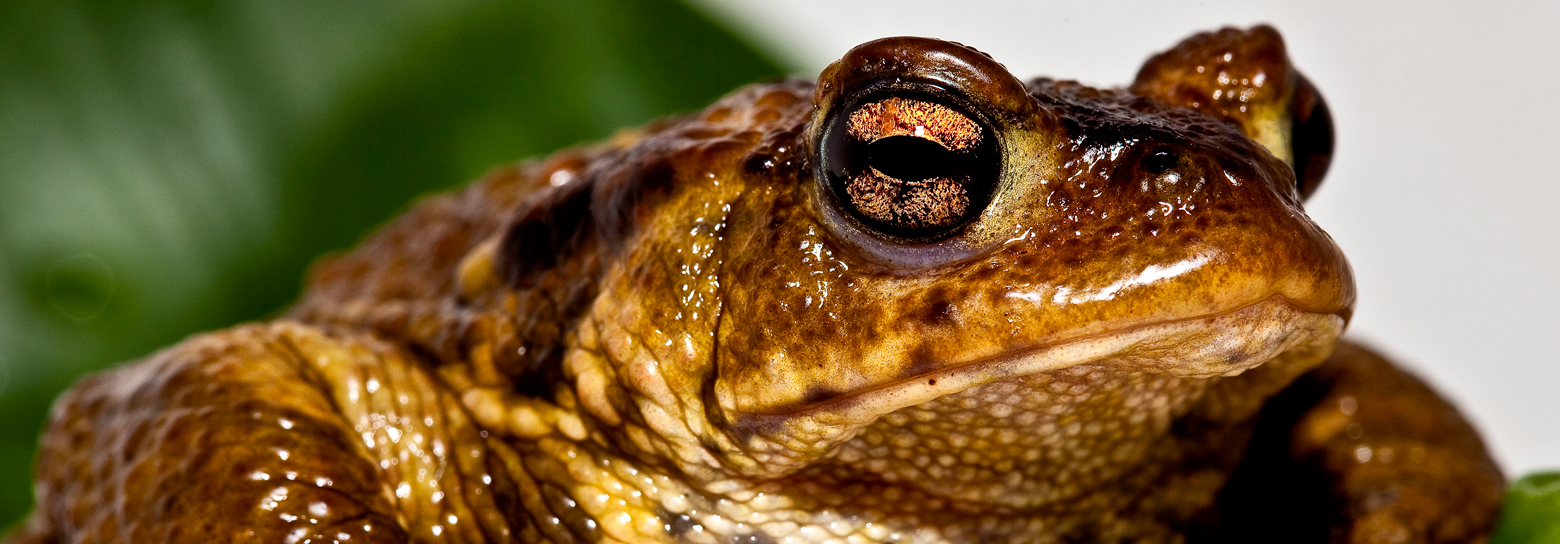Cane toads have become a part of life in Queensland since 1935, when over 100 were introduced to eradicate cane beetles that were destroying sugarcane crops.
Although they did eat a significant number of cane beetles, this tiny population of 100 toads found they liked it here in Queensland and started to successfully reproduce. Now, an estimated two billion can be found in Australia, and they have become a significant pest species in their own right. Cane toads have glands on the back of their neck/shoulders which can emit a toxin known as bufotoxin. Their tadpoles are also highly toxic. Bufotoxin is poisonous to both dogs and cats, and also to most native species. It is essential for Queensland pet owners to be able to identify a cane toad, recognise the signs of poisoning in their dog or cat, know what to do to help their pet, and lastly, how to humanely euthanase cane toads.
How to Identify a Cane Toad
Cane toads have a distinct appearance, with rough, leathery, warty skin and sizeable poison (otherwise known as parotoid) glands on their shoulders. However, some juvenile cane toads can be easily mistaken for native frogs. Adult native frogs are usually around 4 centimetres in size, and it is not uncommon to find a juvenile cane toad that is approximately this size. A native frog has smooth skin, which can be pale yellow, green or brown. A toad’s skin is usually brown, grey, reddish-brown or yellow, with a grey stomach area. Cane toads and native frogs are also distinguishable by their mating calls. The New South Wales Department of Environment and Heritage has compiled a catalogue of mating calls and croaks from both species, which you can listen to
here.
To find out more about the differences between native frogs and cane toads, visit this Queensland Museum webpage
What To Do If You Have A Cane Toad On Your Property
If you see a cane toad on your property, the first thing you should do is remove your pets and any young children from the area to prevent them from coming into contact with the toad and its toxin. Because the cane toad is a pest and a threat to Australia’s ecosystem and wildlife as well as to pets, the RSPCA recommends that you humanely euthanise the toad. Please ensure you have ruled out the possibility of the animal being a native frog before you proceed.

RSPCA Qld recommends two methods tor euthanasing cane toads (Visit http://www.rspcaqld.org.au/what-we-do/provide-animal-care-advice/pet-tips-for-spring and click on the fact sheet at the bottom of the page):
- HopStop® is a commercially available spray specifically designed for euthanasing cane toads. Ensure you follow the directions on the can.
- Stepped hypothermia involves placing the toad in a container in the refrigerator for 12 hours and then into the freezer for a further 24 hours. To catch the toad, place a container over the top of the toad and slide the lid underneath. Slowly invert the container. If you are going to touch or handle the toad always wear rubber gloves and dispose of them afterwards. Toads will release their poison if they feel stressed or threatened.
Before you dispose of the toad’s body, please ensure that it is no longer alive. The toad is dead if it is unable to turn itself over when placed on its back, has no respiratory or heart function (including a pulse and chest movement), and does not respond to gentle or moderate squeezing of its limbs. Dispose of bodies in your wheelie bin. If you bury the body it must be deep enough so it is not dug up by your dog.
What To Do If Your Pet Eats Or Licks A Cane Toad
When a pet eats, licks or ‘mouths’ a cane toad, the toad releases the toxin into the stomach or more commonly into the mouth of the pet. The toxin is rapidly absorbed through the mucous membranes of the mouth. In small doses, this toxin will cause your pet to exhibit symptoms similar to that of a psychedelic drug, and is unlikely to be fatal. However, in larger doses, a dog or a cat will display a host of more severe symptoms, which in some extreme cases can lead to death if not treated quickly. These symptoms may include vomiting, difficulty breathing, foaming at the mouth, dilated pupils, increased heart rate, difficulty walking, lethargy, and seizure. It is important to seek medical advice if you notice any of these symptoms.
Immediately you suspect your pet has ‘mouthed’ a cane toad, you should gently flush your pet’s mouth with water, ensuring your pet does not choke by tilting their head downwards with their mouth facing the ground. Additionally, you should wipe your pet’s mouth out with a damp towel multiple times, washing the towel thoroughly between wipes. These actions will reduce the amount of the toxin absorbed by the pet and could be life-saving. An adult cane toad has enough toxin to kill an average sized dog in 15 minutes.
After this first aid treatment, and particularly if your pet is showing any symptoms as described above, it is best to seek medical treatment. You should have your local vet’s contact details in an easy to access location, as well as the contact details for an emergency vet in case your local vet is not open.
It is important to recognise the symptoms of bufotoxin ingestion in your pet even if you don’t see the toad, and that you are ready to act if your pet is exhibiting these symptoms; your knowledge and preparedness could save your pet’s life.





